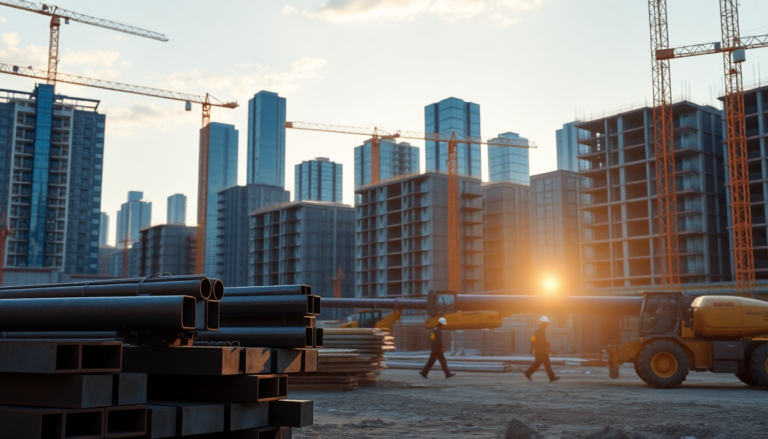Argomenti trattati
The landscape of multifamily housing is shifting, and it’s not just the economy that’s at play. Recently, tariffs imposed by the government on imported aluminum and steel have begun to ripple through the construction industry, and you might not even realize how it affects you. It’s a complex web of costs and consequences that could reshape the rental market as we know it. What does this mean for future housing developments? Buckle up, because the ride is about to get bumpy.
The rising costs of construction materials
When President Trump announced the implementation of a 25% tariff on imported steel and aluminum, it sent shockwaves through various sectors, particularly construction. Many may think, “Well, I don’t work in construction, so how does this even concern me?” But here’s the kicker: these materials are foundational to multifamily housing units. Builders are now faced with escalating costs, which could easily discourage new projects from breaking ground. I remember when I first learned about how material costs impact the real estate market—it was eye-opening! As the cost of these essential materials rises, so do the expenses associated with building new apartments or condos.
Impact on rental prices
As construction costs climb, the inevitable consequence is that rental prices will follow suit. Yes, even if you’re not in the market for a new apartment, you should pay attention. Higher building costs mean that developers will likely pass those costs onto renters. As reported by Realtor.com, markets where multifamily permits surged in recent years are expected to face the most significant challenges. This means that rental prices could increase substantially in markets that are already experiencing rapid growth.
2024 multifamily housing permit trends
Here’s where it gets really interesting. In 2024, several metropolitan areas are projected to see an explosion in multifamily housing permits compared to previous years. For instance, San Diego, CA, issued 7,244 permits, marking an 18.8% increase from the 2019-2023 average. Similarly, Birmingham, AL, saw a 22.1% increase with 556 permits issued. What’s happening here? Developers are racing to capitalize on the demand for multifamily housing, but the looming tariffs cast a long shadow over this enthusiasm.
Which markets are at risk?
As we dive deeper, some cities are clearly positioned to be hit the hardest. Let’s take a look at Atlanta, GA, where 13,937 permits were issued, reflecting a staggering 31.5% increase from previous years. That’s a lot of new housing coming online, but with tariffs in play, will these projects face delays or increased costs? And what about Columbus, OH, with a 32.7% rise and 7,195 permits? In my opinion, these markets are on the brink. Developers here are likely to feel the pinch of tariffs as they navigate the complexities of rising costs.
The most affected markets
Let’s spotlight a few more cities that stand out in this chaotic landscape. Cleveland, OH, issued 720 permits—a 37.9% increase—while Memphis, TN, reported 1,089 permits, up by 39.5%. And then there’s Oklahoma City, OK, which saw a remarkable 90.4% spike with 581 permits. Milwaukee, WI, is noteworthy as well, with a whopping 101.3% increase and 1,884 permits. These figures are staggering, yet they come with a caveat: the potential for increased costs due to tariffs could derail many of these ambitious projects.
Looking ahead
So, what’s the takeaway? It’s a mixed bag of opportunity and caution. On one hand, the surge in multifamily permits indicates a robust demand for housing, especially among younger generations looking for affordable options. On the other hand, the looming tariffs threaten to dampen this growth, leading to higher rents and stalled projects. As many know, the housing market is notoriously unpredictable, and these tariffs only add another layer of complexity. Personally, I believe that staying informed is crucial. Whether you’re renting, buying, or just watching from the sidelines, understanding these dynamics will be key as we move forward into an uncertain future.

